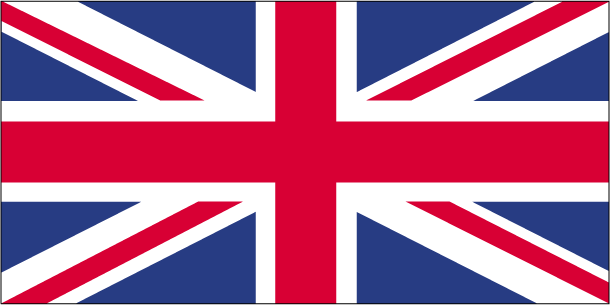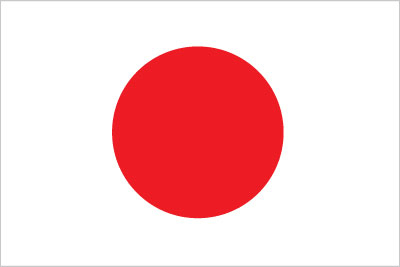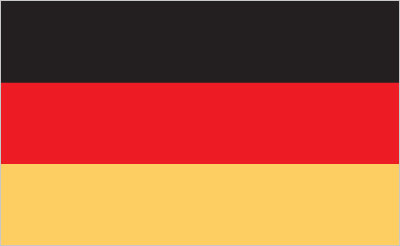
Does mayonnaise taste different in Japan and Europe? Comparing Japanese and German Mayonnaise
Mayonnaise is a staple seasoning at home. Mayonnaise is used in a variety of dishes and is loved by many people in Japan, but of course Germany also has mayonnaise. However, even with the same name mayonnaise, Japanese and German mayonnaise do not taste exactly the same.
What is the difference between Japanese and German mayonnaise? I compared this seasoning that is often used in both countries.
What is the difference between Japanese and German mayonnaise?

German supermarket mayonnaise
In the dressing section of German supermarkets, there are a variety of mayonnaise, from famous manufacturers such as Thomy to private brands of each supermarket. The container is completely different from Japanese mayonnaise, and there are three main types: a long and thin aluminum tube, a plastic bottle, and a glass bottle. Furthermore, if you look at the product labels, you will find that there are several varieties that look similar, such as Delikatessmayonnaise , Mayonnaise , Salatmayonnaise , Remoulade , and Salatcreme . understand. What are the differences? 
types of german mayonnaise
According to European regulations on mayonnaise, mayonnaise is an emulsified seasoning made from egg yolk and edible vegetable oil, with fat accounting for 70% or more of the total weight and egg yolk accounting for 5% or more. It is made by adding vinegar or lemon juice.
Among them, mayonnaise with value-added characteristics such as using oil of higher quality than ordinary mayonnaise or having a significantly higher egg yolk content can claim the name delicatessen mayonnaise .
Salad mayonnaise is a mayonnaise-type condiment made from egg yolk and edible vegetable oil, and is at least 50% fat.
And remoulade is mayonnaise or salad mayonnaise with herbs and chopped herbs and is at least 50% fat. Common ingredients include parsley, chervil, chives, tarragon, pepper, capers, mustard, onions, and pickles.
Salad cream refers to those with less fat content than salad mayonnaise. Although there is no specific regulation, it seems that there are many products with 15% to 35% .
By the way, according to the food labeling standards based on the Food Labeling Law, mayonnaise in Japan is defined as ``a semi-solid dressing that uses egg yolk or whole egg, and contains essential ingredients such as egg yolk, egg white, protein hydrolyzate, salt, sugar, It does not use raw materials or additives other than honey, spices, seasonings (amino acids, etc.), acidulants and spice extracts, and the weight ratio of edible vegetable oil to the raw materials and additives is 65. more than a percentage” * .
Comparison of Japanese and German Mayonnaise: Differences in Ingredients and Flavors
Japanese mayonnaise and German mayonnaise may differ in taste depending on the manufacturer and brand, but German mayonnaise is generally lighter, less sour and sweeter than Japanese mayonnaise.
It is often used in salads with vegetables, but in Germany, the most common use for mayonnaise is french fries.
It's common in Germany to eat heaps of potatoes with ketchup as well as mayonnaise at markets, festival stalls, and restaurants.
German sweet mayonnaise goes well with freshly fried potato fries.

However, many Japanese seem to feel unsatisfied with the difference in taste when using this German mayonnaise in Japanese recipes.
Let's compare the ingredients of Japanese Kewpie mayonnaise and Germany's representative THOMY delicatessen mayonnaise.
First of all, according to Kewpie's website, the raw materials of Kewpie mayonnaise are as follows.
Edible vegetable oil (manufactured in Japan), egg yolk, brewed vinegar, salt, spices/seasonings (amino acids), spice extracts, (contains some eggs, soybeans, and apples)
The ingredients of Japanese Kewpie mayonnaise sold in Germany are more detailed than those on the website. Vegetable oils and fats contain rapeseed and soybeans, which account for 70% of the total weight, and egg yolks account for 14% . Weight is stated.
On the other hand, THOMY 's delicatessen mayonnaise
Sunflower oil 80% , alcohol vinegar, egg yolk 6.2% , mustard seeds, spices, iodized salt, sugar
can be confirmed on the website.
In other words, you can see that THOMY 's mayonnaise, which is common in Germany, has a higher oil content than Kewpie mayonnaise, but has a lower proportion of egg yolk, and the vinegar used is also more sour.
Especially if you use German mayonnaise for a dish that uses a lot of mayonnaise, such as potato salad, you may be disappointed that the taste is not what you expected. You can add sourness with vinegar or lemon juice, but it will be difficult to make up for the richness of Japanese mayonnaise. If you want to enjoy familiar tastes in Germany, it might be a good idea to use Japanese mayonnaise for Japanese recipes.
Japanese mayonnaise you can buy in Germany
So, what kind of Japanese mayonnaise can you buy in Germany?
You can buy mayonnaise from multiple brands at Japanese grocery stores in towns where there are many Japanese living in Germany.
However, Kewpie mayonnaise is the most commonly found Japanese mayonnaise in Asian food stores that carry products not only from Japan, but also from South Korea, China, and Thailand.

However, since it is an Asian shop with ingredients from various countries, there are times when Kewpie mayonnaise not only made in Japan but also made for Thailand and Vietnam is sold.
Even with the same Kewpie mayonnaise, there are differences in the ingredients depending on the target country, and the taste will change slightly, so it is recommended that you check the back of the package before purchasing.
Also, at our German-based online shop , we carry Japanese mayonnaise, soy sauce, mirin, and a wide range of other Japanese food ingredients, from table-sized sizes to commercial-use items.



